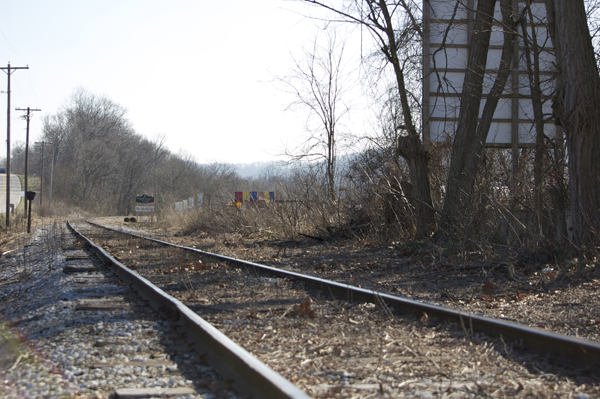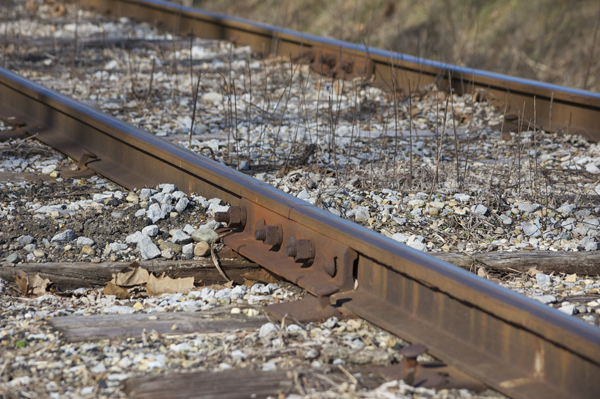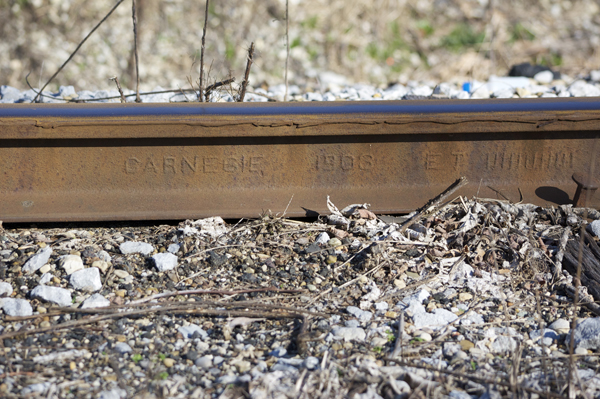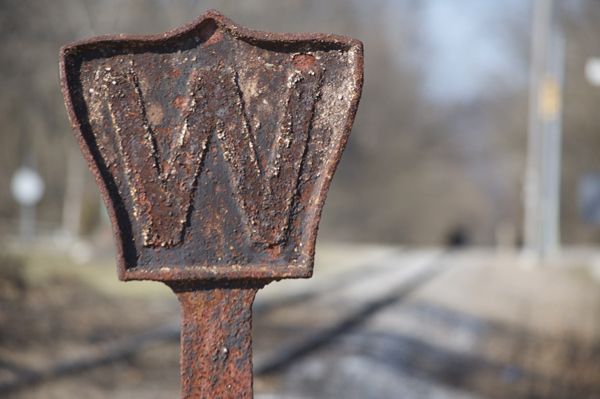Why did I switch to quarter-inch scale from HO? Only one reason really: The track. I’ve always been fascinated by prototype trackwork, especially the downtrodden branchlines and lowly sidings that are past their prime. For as long as I’ve been in the hobby, I’ve tried to model such track with increasing attention to the details most modelers simply overlook or give up on because they didn’t think it was worth the time and expense to do it faithfully or maybe the proper materials weren’t commercially available in their preferred scale.
You can do a lot with the right paint color and weathering techniques to imply that such details are there, but over time that wasn’t enough for me. I wanted to actually see the same level of detail on my model track that I saw on the real thing outside. While you can now build stunning track in HO today, thanks to firms like Details West and the P87 Stores, the small size of HO wasn’t going to satisfy me any longer in this regard.
This is the Indiana & Ohio line just south of Brookville, next to the site of the former Robert’s Mill. The track in these photos represents what really drew me to this line. It used to be a little rougher than what is seen here, as the line has upgraded and replaced some ties and added fresh ballast. Nonetheless, train speeds are well below twenty miles per hour on the entire twenty-six mile branch.
Of course, not everyone finds this as interesting and compelling as I do. Many prefer a high class, well maintained, heavy duty mainline with endless traffic running at breakneck speeds. There’s certainly nothing wrong with all that. However, it’s not me and you won’t find that point of view here very often, and, I do have a point of view that’s reflected by this blog and the subjects it covers. In a nutshell it’s this: Small Is The New Big. (With apologies and all due credit for the phrase to Seth Godin, who wrote a business book bearing the same title.)
For me, being able to faithfully model details like these two joint bars along with the color and texture of the rails means more than an entire basement of flextrack in any scale.
Look at the streaked weathering pattern on the foreground rail. Look at the condition of the ballast; how the old mixes with the new. Look at the state of the cross ties and the weed stems poking up in the middle of the track, along with the dead tree leaves scattered all about. Did you see the bent track spike? Not to worry anymore, bent spikes are prototypical. All of this is just the surface. Looking closer, there’s more.
As I was shooting photos, this mill stamp caught my eye. Look at the date! Carnegie Steel, 1906. Think about that. This rail is 106 years old and still in service. I wish one could model this. Even in quarter-inch scale, a mill stamp on the side of a rail would be barely visible to the naked eye. I bet a company like Archer Transfers could produce resin decals for these mill marks. If they can do tiny HO rivets, I bet this isn’t beyond the realm of possibility. Is this going to the extreme? Sure it is but some in the hobby have always dared to go beyond the edge of what’s “possible” and in doing so, they’ve shown the rest of us the way. That’s also a big part of what I try to convey in my writing. There are more levels and ways to practice this hobby than most of us care to imagine. My goal is to bring attention to these things. To sound the whistle as it were and alert people to something interesting that’s coming along.
Regards,
Mike




0 Comments